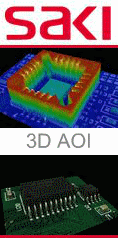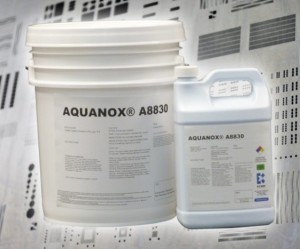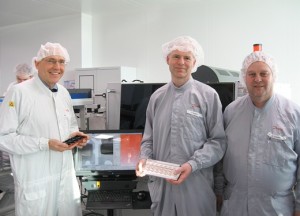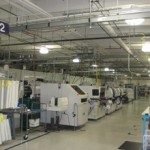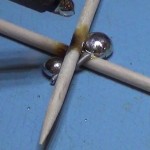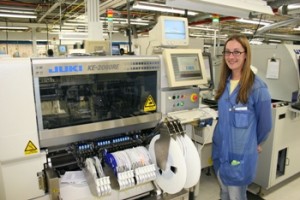Internet of Everything requires efficient programming methods
By Stephan Demianiw, Sales and Channel Manager Europe, Data I/O GmbH.
The Internet faces an important turning point in its development: the change from a computer net to a network of connected things, what means the merge of virtual and real worlds. It wants Internet-of-Things-capable electronic devices and semiconductors, which are long-term available and relevant to security issues. For programming these devices the industries want secure and reliable solutions.
The „Internet of Things” (IoT) promises a self-organizing and controlling world. Tomorrow’s machines and commodity items will be intelligent, programmable, connected and interactive with information. Many applications are possible like production and process automation including test and measurement, medical healthcare, industrial automation, lightning or energy generation plus consumer apps for example smart TV or wearables and connected cars.
The German semiconductor market for automotive and industrial controls applications has grown dramatically within the last year. It is expected that especially the dynamical industrial electronics market will excel the German automotive electronics numbers. There is for example an international industry initiative launched by leading manufacturers, users, and operators that has set itself the target of jointly defining, developing, and providing a secure and vendor-neutral wireless communication platform for smart buildings. This platform wants to thereby fulfill all of the technical requirements for secure, interoperable, and cross-disciplinary networking of smart devices for use in all areas of building automation.
Most firms plan to deploy Internet of Things in the near future and are most likely to implement an IoT solution. This refers to an increasing amount of intelligence and connectivity in very small devices that were previously standalone. According to The Economist magazine this market will is estimated to rise from 10 to 50 billion unities per year within the next five to seven years.
All these devices need to be programmed in order to fulfill their functions in the connected applications. Data I/O provides the technology to program the internet of everything, and makes this technology attractive by making it the most secure, managed, and cost effective way to program these new devices and applications. It should not to be disregarded how important programming requirements can be met by so called connected appliances and smart factories. In the report of Business Insider BI Intelligence, a US-American research- and information service, especially operational efficiency is seen as the most important benefit of Internet of Everything.

Fig. 2 Companys want to improve their operational efficiency with Internet of Things (Source: BI Intelligence)
More Operational Efficiency with Special Programming Strategies
Efficiency improvement can be achieved by classical approaches like supply chain optimization and cost reduction. When introducing internet of things applications customers want to see operational efficiency benefits, if not short-term, but medium-term at least. It is therefore necessary to make cost benefits transparent and traceable. With respect to device programming Data I/O has taken a first step in the “Total Cost of Programming (TCOP)” direction. This is a way to help customers compare apples and oranges. When looking to make a decision on programming technology, often incomplete information makes it difficult to determine which of several methods is lowering cost. Decision makers look at raw speed, programming times, upfront costs, but until now, did not have a way to evaluate competing technologies and whether a manual or automated system is most appropriate. The TCOP methods allows to look at capital costs, labor costs, consumables, any ongoing costs, and equipment utilization to develop a model and get to the lowest total cost for different applications. For OEM customers with very small volumes it is typically better to outsource their programming cost effectively. Once volumes become greater than 50,000 per year, an in-house solution might be generally preferable. Above 100,000 to 200,000 parts per year, an in-house automated solution is definitely the best choice. These are guidelines, and Data I/O has the tools to work out each individual case with the customer in order to advise on whether offline automated programming is lower cost than ISP or other methods. The TCOP models allow for a very open discussion that help to make the right choices.
The PSV7000 for example has already lowered the cost of programming by 30-50% for users. This trend is sustained with the new lower cost system PSV5000 introduced last year. Customers, who want to go back from alternative methods of programming, such as In Systems Programming (ISP), as their code sizes continue to increase, will find the Total Cost of Programming (TCOP) a proper approach to decrease costs faster than other methods.

Fig 3 In comparison to manual programming systems the automated solution PSV5000 lowers cost by 50% (Source: Data I/O)
Security determines Acceptance
Data security has become a more and more important factor to get necessary acceptance by the end users. Where embedded systems, industrial robots within shop floors und operational control systems communicate among each other, cyber security is going to be compulsory. Industry users want to know: What is the main benefit, what is necessary, what is affordable, and protects intellectual property? The more flexible the communication is between networking systems and cyber-physical components the higher are requirements for data and IT security. Usually it is more difficult to argue for added value than for simple hardware components, but in case of security it is definitely a basic question. Data I/O offers different software options for secure data management, factory integration and remote monitoring, that bring high data security to smart and connected appliances. The programming technology LumenX™ manages and secures programming jobs from design through manufacturing for highest quality. The Job Creator bundles the programming job parameter image files and algorithms. At job creation checksum validation ensures, that the file is correct for production. The Job Runner validates programming jobs are free from corruption and enables operators to view job parameters while preventing them from modifying the secured programming job. A comprehensive suite of traceability software applications like bar code integration and tape label generator along with fiber laser marking and 3D co-planarity component inspection for precise alignment and placement meets the demanding process requirements. It also ensures that every programmed component is in full compliance with specifications and faulty or incorrectly programmed components are reliably identified and eliminated.
More Intra-organizational Collaboration thanks to IoT
Today, product manufacturing is strongly built on global resources and opportunities. Development and design are often performed in a completely different geographical location than prototyping or volume production. The sites are located wherever technical skills and cost advantages are the greatest. In this way, the IoT can help to generate market advantage for companies by worldwide networking and intra-organizational collaboration. Global consistent communications and technology platforms help to give access for everyone everywhere. They allow monitoring the entire programming process from design to production, thereby guaranteeing an optimal firmware supply chain management. Based on high-performance systems, that are assigned to IP addresses, this seamless strategy ensures that all departments involved in the programming process always have and pass on the correct program version and can control it via enhanced statistical data.
The IoT enables the transition from deterministic production planning to self-monitoring and control. Today connected and secure programming methods can support manufacturing industries in their digital transformation.
For further information visit http://www.dataio.com/
Skyscraper 1
